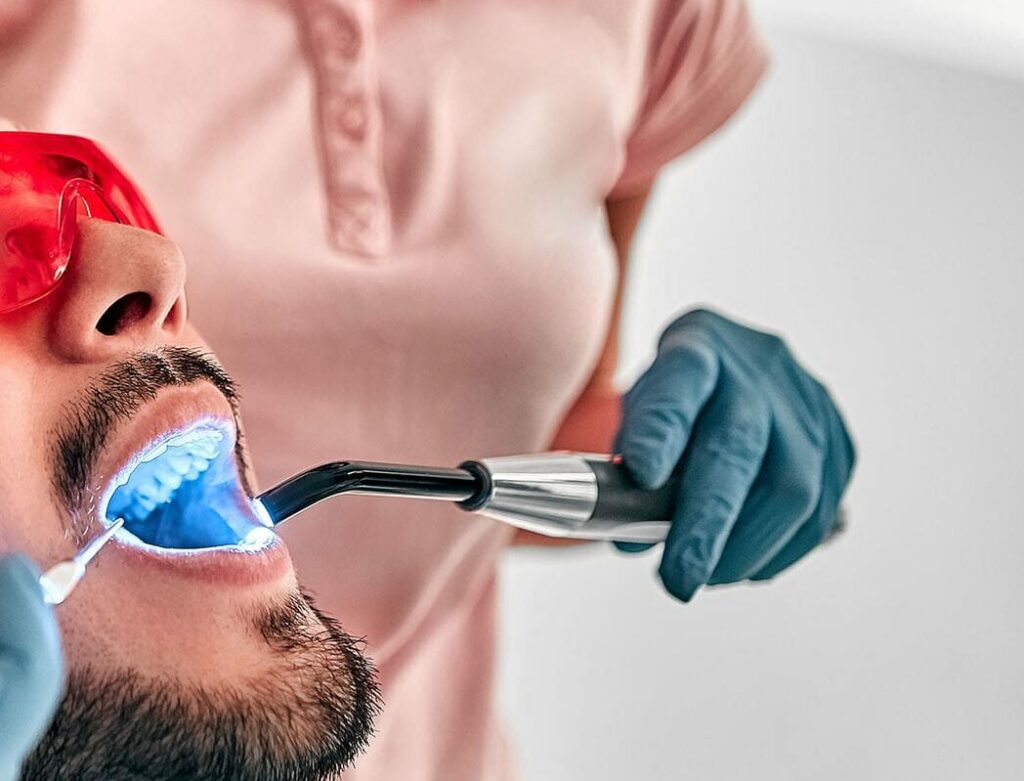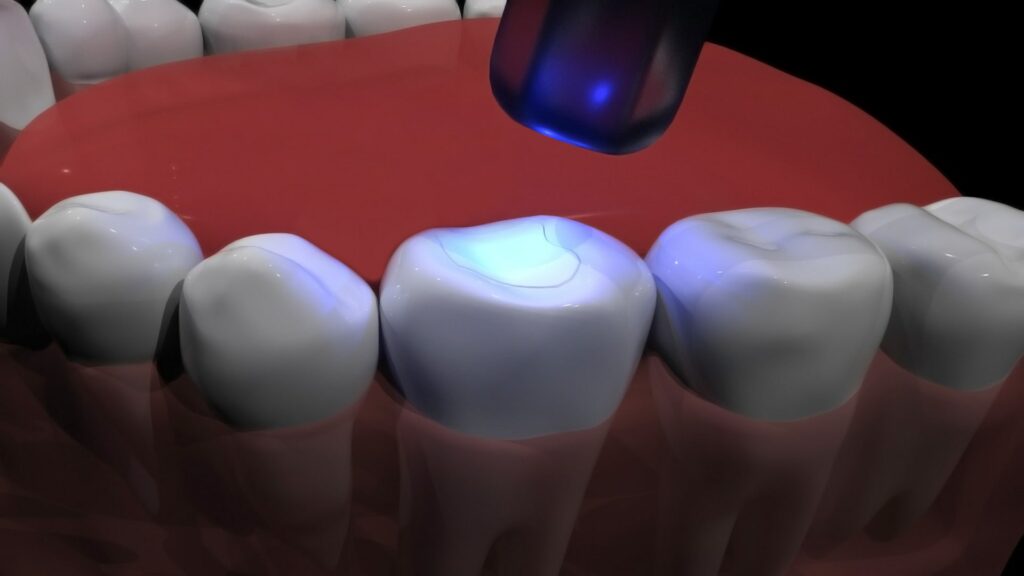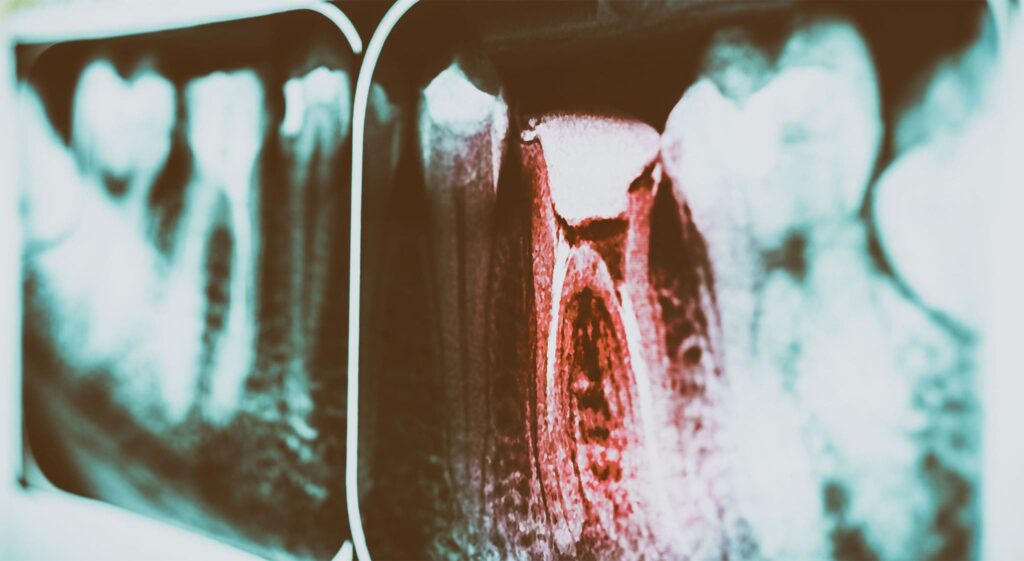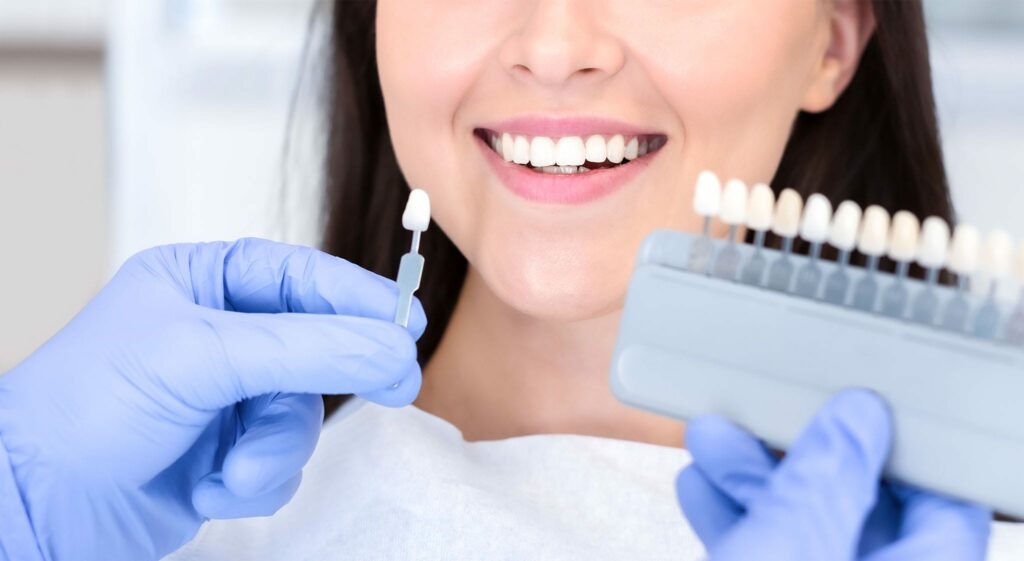
Dental filling
Dental filling is a procedure performed to treat tooth decay (caries). Repairing the teeth as soon as possible ensures that the decay doesn’t become worse, causing serious damage or tooth loss. During this procedure, the dentist removes the tooth’s decayed parts, cleanses the cavities, and fills them with a special durable material. Modern dental filling methods are technologically advanced and effective compared to previous methods, as well as using the best possible materials, which make it possible to restore teeth to a near-perfect state. In addition to restoring tooth cavities, they also allow changing the colour and shape of the teeth.
- Dental filling procedure
- Aesthetic dental filling
- What causes tooth decay?
- Tooth decay symptoms
- What are the risks of untreated tooth decay?
- Dental fillings for children
- How long do dental fillings serve?
- Temporary dental fillings
- Dental fillings and teeth whitening
- Dental filling in our clinic
- Dažniausiai užduodami klausimai
- Pricelist
Dental filling procedure
1 – Oral inspection and diagnosis

The first step is to determine whether there are any cavities in the teeth. The treatment of tooth decay is much easier, shorter, and cheaper when the damage is noticed at an early stage. During the inspection, the surfaces of all teeth are carefully checked and the condition of the teeth, gums and occlusion is assessed. Particular attention is paid to newly erupted teeth and problematic areas of the oral cavity. The patient’s oral hygiene habits are discussed and personalised advice is given.
2 – Preparation of the damaged tooth

The patient is offered some form of anaesthesia before starting the procedure. Local anaesthesia is commonly used. In cases of increased sensitivity or anxiety, alternative methods of sedation or general anaesthesia are considered. The dental filling procedure begins with the removal of the decayed tissues from the damaged teeth. Dental drills and caries detectors are among the instruments and materials used for this purpose. The dentist ensures that the treatment is minimally invasive – preserving as much healthy, decay-free dental tissue as possible. Before the filling is applied, the cavities are thoroughly cleaned and disinfected. In cases of damage to the pulp (internal tooth organ), endodontic treatment is performed.
3 – Filling the tooth

The cavity remaining after the removal of the damaged tooth tissues is filled. A special filling material is used that allows the dentist to restore the original tooth’s shape.
Dental fillings can be made of different types of materials. Some materials ensure the highest aesthetic quality, while others prioritise durability and bite resistance. Special temporary fillings can be used for children’s milk teeth or endodontic treatment of root canals. To ensure the best result, the most effective type of filling is always chosen by the dentist, based on the patient’s situation. After hardening, the filling is sanded and polished to prevent discomfort as well as maximise function and appearance.
Aesthetic dental filling

An aesthetic dental filling is a way of repairing decay-damaged teeth by restoring or changing their original shape and colour while maximising appearance. This method of dental restoration is especially suitable for patients who care about the natural appearance of their smile. Aesthetic dental fillings are a minimally invasive method of treatment. During the procedure, the teeth are restored in layers and we try to preserve as much of the natural and healthy tissue as possible.
Aesthetic fillings are made of high-quality composites, which are as close to healthy, natural teeth as possible, in terms of their functional properties such as transparency and gloss. The dentist selects the material of aesthetic fillings individually for each patient. A more transparent and fine-looking filler can be used to restore the front teeth and a firmer and more resistant one for the canines and molars.
Aesthetic fillings can also be used to correct the shape of the smile, fill small gaps between teeth, and correct minor teeth crowding. This is one of the most effective methods to restore worn-out teeth and protect them from potential major damage.
What causes tooth decay?
The most common causes of tooth decay are bad eating habits, poor oral hygiene, and genetic predisposition. The occurrence of tooth decay can also be affected by occlusal defects. The development of pathogenic bacteria and the building-up of tartar is faster in places where teeth are difficult to clean with brushes. Because tooth decay is a bacterial infection, its development is also directly affected by immunity.
Tooth decay symptoms
Toothache, sensitivity of teeth, cracking of the enamel, visible holes and dark spots may be the primary signals of developing tooth decay. The best ways to prevent tooth decay are through proper oral hygiene, regular and high-quality cleaning, and dental check-ups.
It is recommended that you visit the dentist for an oral examination at least every 6 months. Dental defects can also be noticed by an oral hygienist by examining the teeth during a routine hygiene procedure. Therefore, by attending regular professional oral hygiene appointments, patients not only protect their teeth and gums from potential dental diseases but also ensure their timely diagnosis.
What are the risks of untreated tooth decay?

It can sometimes take only a few months from the onset of caries before damage to the internal tooth organ (pulp) can appear. Decay that is not treated in time can lead to more serious dental diseases such as:
- Inflammation of the pulp (pulpitis). Pulpitis is the most common complication of caries, causing long-term toothache and requiring complex endodontic treatment.
- Separation of the gums from the teeth (periodontitis). This acute inflammatory process can affect the whole body, cause severe toothache and sensitivity of the teeth, and potentially lead to tooth loss. Periodontitis requires urgent periodontal treatment.
- Not treating decay-damaged teeth results in their loss.
Due to these risks, it is especially important to visit the dentist for regular check-ups and follow oral hygiene rules. It is recommended that you visit the dentist immediately when the first signs of tooth decay appear. Early diagnosis can help save teeth and gums and is much cheaper than at later stages.
Dental fillings for children
Despite the fact that milk teeth are temporary, they play an important role in the development of a child’s bite. In addition, a child’s oral hygiene skills are often not developed enough to allow for proper teeth cleaning. Therefore, filling milk teeth is one of the most commonly performed procedures in paediatric dentistry.
Dental fillings for children are performed by paediatric dentists who not only ensure that children’s teeth retain their functionality and appearance, but also take care of the child’s psychological preparation for the procedure. During the visit, the child is interacted with to help with any anxiety and the treatment process is presented to them as a fun game. Our clinic also offers a large selection of anaesthetics that ensure no pain is felt during the procedure.
Dental treatment in childhood is especially important because it helps to prevent dental anxiety in the future and get them used to regular visits to the dentist.
How long do dental fillings serve?
The high-quality materials used for modern dental fillings ensure that they last significantly longer than their counterparts 30 years ago. However, it is not possible to predict when the filling will need to be replaced. The survivability of dental fillings is highly dependent on the type of material as well as the patient’s acidity level in the mouth, oral hygiene, eating and any other habits. The dentist can tell if it is time to change the filling during the oral examination. Therefore regular visits to the dentist are recommended to help prevent fillings from failing.
Temporary dental fillings
Temporary fillings can be applied when dental treatment is going to be performed over several visits. Temporary fillings are most commonly used in endodontic treatment, where the inner tooth cavity is covered after the initial cleaning of the dental canal. Temporary fillings allow the dentist to monitor the treatment process and ensure that, if necessary, it can be effectively finished during the follow-up procedure. Temporary fillings can also be used when it is necessary to delay the treatment process.
Temporary fillings are made from special cement mixtures. The material of the temporary fillings has hypoallergenic, strong adhesive and X-ray contrastive properties.
Because the temporary filler is applied for a short time, it is especially important to follow the dentist’s recommendations for oral care as well as not delaying the appointment to finish the treatment.
Dental fillings and teeth whitening

Due to the properties of the materials used, the colour of fillings, as well as veneers and various dentures, will not change after teeth whitening. Therefore, in order to have an ideal white smile, it is always recommended that you do teeth whitening before aesthetic dental fillings. Then, during the aesthetic dental filling procedure, the colour of the filling material is selected corresponding to the shade of the already whitened teeth.
Dental filling in our clinic
Highly qualified dental specialists working in our clinic perform high-quality and minimally invasive dental filling. Only state-of-the-art technologies and techniques are used for the procedure. The filling materials are individually selected for each patient, ensuring their long-lasting service. The best way to protect your teeth from unwanted diseases is by registering for a fast dental check-up.
Dažniausiai užduodami klausimai
Pricelist
Adult
| Dentist consultation | 50 € |
| MTA | 20 € |
| Small composite dental filling | 60 € |
| Medium composite dental filling (1 surface) | 100 € |
| Medium composite dental filling (2 surfaces) | 120 € |
| Large composite dental filling (3 surfaces) | 150 € |
| Glass ionomer filling | 100 € |
| Dental seal | 25 € |
| Local anaesthesia | 15 € |
| Crown restoration | 200 € |
| Aesthetic filling (1 tooth) | 220 € |
Children
| Milk tooth dental filling without anaesthesia | 75 € |
| Milk tooth dental filling with local anaesthesia | 95 € |
| Milk tooth dental filling with sedation | 125–180 € |
| Milk tooth dental filling with general anaesthesia | 120 € |
| Permanent tooth dental filling | 85-150 € |
| Permanent tooth dental filling with general anaesthesia | 150 € |










